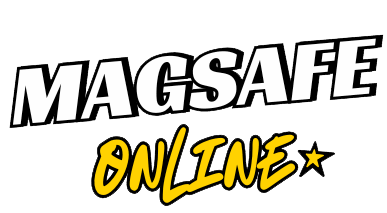In every democratic system, there must be a bridge between the people and the powerful institutions that govern them. That bridge, in many nations, is known as the Ombudsmann (plural: Ombudsmänner). Originally a Scandinavian concept, the ombudsman institution has evolved into a global model of accountability and citizen protection. From government complaints to corporate disputes, ombudsmänner play an increasingly vital role in ensuring that fairness, transparency, and justice remain cornerstones of modern administration.
In this article, we’ll dive deep into the history, functions, types, and significance of ombudsmänner—exploring why their presence has become indispensable in both public and private institutions.
The Origins of the Ombudsmann Concept
The term Ombudsman comes from the Swedish word meaning “representative” or “agent.” It was first used officially in Sweden in 1809, when the Swedish Parliament established the office of the Justitieombudsmannen. The purpose was simple yet revolutionary: to oversee the actions of public authorities and protect citizens from abuse, corruption, or administrative errors.
From there, the idea spread rapidly. By the 20th century, countries like Denmark, Finland, and Norway had adopted similar institutions. The model proved so effective that other nations outside Scandinavia—including New Zealand, Canada, and the United Kingdom—followed suit. Today, ombudsmänner exist across continents, adapted to the specific needs and legal frameworks of each nation.
The Philosophy Behind the Ombudsmann System
At its heart, the ombudsmann represents trust, accountability, and impartiality. Unlike courts or bureaucratic review boards, the ombudsmann operates on the principle of informal justice. They listen, investigate, and mediate disputes between citizens and institutions—without the intimidating formality or costs of legal proceedings.
This philosophy rests on three fundamental ideas:
- Independence – Ombudsmänner must remain free from political or institutional control to maintain credibility.
- Accessibility – Anyone, regardless of social status or education, should be able to approach the ombudsmann easily.
- Fairness and neutrality – The ombudsmann does not take sides but ensures that rules and ethics are upheld for all parties.
By maintaining these principles, ombudsmänner have become trusted figures who embody the moral compass of governance and corporate responsibility.
Key Roles and Responsibilities of Ombudsmänner
1. Investigating Complaints
The primary function of an ombudsmann is to investigate grievances brought by individuals against public agencies, organizations, or corporations. This can include cases of administrative injustice, corruption, discrimination, or poor service.
When a complaint is received, the ombudsmann typically reviews documents, interviews witnesses, and assesses whether a policy or decision violated established procedures or human rights.
2. Mediation and Dispute Resolution
Ombudsmänner are often referred to as mediators of fairness. Instead of relying on courts or lawsuits, they use negotiation and dialogue to help both sides reach a fair outcome. This approach saves time, reduces costs, and fosters better relationships between institutions and the public.
3. Making Recommendations
After an investigation, an ombudsmann may issue recommendations rather than binding decisions. These can include suggestions for policy changes, administrative improvements, or even disciplinary actions. Although their rulings aren’t legally enforceable in many cases, they carry significant moral and political weight.
4. Promoting Transparency and Ethics
Ombudsmänner play a watchdog role by ensuring that institutions act transparently. They often publish annual reports summarizing complaints, outcomes, and systemic issues, encouraging organizations to adopt ethical reforms.
5. Educating the Public and Institutions
Many offices also focus on education and awareness—helping citizens understand their rights and advising institutions on best practices in governance, workplace fairness, and human rights protection.
Types of Ombudsmänner
1. Public Ombudsmann
The most traditional form, responsible for handling complaints against government departments or public officials. They ensure that laws are applied fairly and that no citizen suffers from bureaucratic negligence.
2. Corporate or Organizational Ombudsmann
Found within corporations, universities, or NGOs, these ombudsmänner handle internal disputes—such as workplace harassment, ethical violations, or conflicts between management and employees.
3. Industry-Specific Ombudsmann
Some countries have specialized ombuds offices for sectors like banking, healthcare, energy, telecommunications, or media. They handle consumer complaints and ensure compliance with industry standards.
4. Children’s Ombudsmann
These ombudsmänner advocate for the rights and welfare of children, ensuring that their voices are heard in matters like education, healthcare, and family protection.
5. Digital and Data Ombudsmann
With technology shaping modern life, several nations have introduced ombudsmänner focused on digital rights, data protection, and cybersecurity—guarding citizens against misuse of information.
The Ombudsmann’s Process: Step by Step
- Complaint Submission – A citizen or employee files a written or online complaint outlining the issue.
- Preliminary Review – The ombudsmann assesses whether the complaint falls within their jurisdiction.
- Investigation – Evidence is gathered through documents, interviews, or on-site visits.
- Findings – A detailed report identifies whether wrongdoing occurred.
- Recommendations – The ombudsmann issues formal advice for corrective actions or policy reforms.
- Follow-Up – Some offices monitor whether institutions comply with the recommendations.
This streamlined process ensures that even complex disputes can be addressed quickly, fairly, and transparently, without legal intimidation.
Global Influence and Modern Relevance
Today, over 150 countries have adopted the ombudsmann system in some form. The United Nations and the European Union even promote the model as an essential tool for democratic accountability.
In countries like Sweden and Finland, ombudsmänner are deeply integrated into governance, while in Canada and Australia, the system is used at both national and local levels. In the European Union, the European Ombudsman investigates complaints about maladministration within EU institutions.
The model has also inspired similar offices in developing nations, where corruption and bureaucracy often hinder justice. Even in the private sector, multinational corporations like Coca-Cola, Shell, and IBM employ ombudsmänner to maintain internal ethics and employee trust.
The Challenges Ombudsmänner Face
Despite their value, ombudsmänner face several challenges in maintaining independence and effectiveness:
- Limited Legal Authority – Since their recommendations are often non-binding, organizations may ignore them without legal repercussions.
- Political Pressure – Governments or corporate boards might attempt to influence ombudsmann findings or appointments.
- Funding Constraints – Limited budgets can restrict investigations, especially in developing countries.
- Public Awareness – Many citizens are unaware that such services exist or how to file a complaint.
- Complex Bureaucracies – In massive organizations, identifying accountability can be a daunting task.
Despite these obstacles, ombudsmänner remain symbols of integrity, striving to balance power and protect citizens’ rights.
Why Ombudsmänner Matter Today
In an era marked by data breaches, corporate scandals, and administrative opacity, the need for independent oversight is greater than ever. Ombudsmänner serve as ethical anchors, holding powerful systems accountable and giving individuals a voice against injustice.
They also enhance institutional credibility. When an organization allows independent scrutiny through an ombudsmann, it signals transparency and a willingness to correct mistakes—qualities highly valued in modern governance and business.
Moreover, their preventive role is often underestimated. By identifying patterns of misconduct or procedural flaws early, ombudsmänner help prevent future issues before they escalate into legal or public crises.
The Future of the Ombudsmann Role
As societies become more complex, the ombudsmann institution must evolve. Here are a few directions in which the system is heading:
- Digital Transformation: Many ombudsmann offices now use AI-driven systems to track complaints and detect recurring issues faster.
- Environmental Advocacy: “Green Ombudsmänner” are emerging to investigate environmental policy violations.
- Global Collaboration: International networks, such as the International Ombudsman Institute (IOI), promote training and cooperation among ombudsmänner worldwide.
- Cross-Border Complaints: With globalization, some ombudsmänner are developing joint mechanisms to handle disputes that cross national or corporate boundaries.
The ombudsmann’s mission—to protect fairness and justice—remains timeless, but its methods continue to adapt to new social and technological realities.
Conclusion
The role of the Ombudsmann is much more than an administrative post—it is a symbol of democracy in action. Ombudsmänner ensure that citizens are not powerless against the machinery of government or the weight of corporations. They give a human face to justice, focusing not on punishment but on fairness, reform, and resolution.
In a world where trust in institutions is increasingly fragile, ombudsmänner remind us that accountability and compassion can coexist. They stand as guardians of integrity—protecting the individual, improving the system, and building a society where fairness is not a privilege, but a right.
FAQs
1. What is the main function of an ombudsmann?
An ombudsmann investigates and resolves complaints from citizens or employees against public or private institutions, ensuring fairness and accountability.
2. Are ombudsmänner independent?
Yes, independence is crucial. They operate free from political or organizational influence to maintain impartiality and trust.
3. Can ombudsmänner enforce their recommendations?
In most cases, no. Their recommendations are advisory, but their moral and public influence often leads institutions to comply.
4. What types of issues can be reported to an ombudsmann?
Issues may include unfair treatment, maladministration, corruption, discrimination, or violation of consumer rights.
5. How can someone contact an ombudsmann?
Most ombudsmann offices allow online submissions, written complaints, or direct consultations depending on their jurisdiction or organization.

